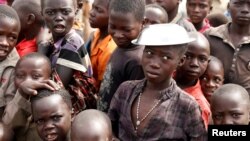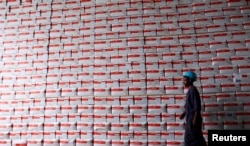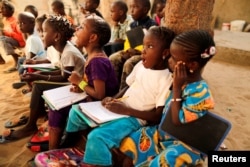The spread of state welfare for children around Africa has the potential to make a major dent in global poverty, the United Nations said on Wednesday.
Children account for the majority of those around the world in extreme poverty, living on less than $1.90 per day, with half of them in Africa, where social security systems are weak.
Globally, about a third of children are covered by social protection programs, but it ranges from 88 percent in Europe and Central Asia to 16 percent in Africa, said a new study by two U.N. bodies.
The evidence shows clearly that social protection benefits, and cash transfers in particular, have a positive impact on poverty, food security, health and access to education — thus helping to ensure that children can realize their full potential, breaking the vicious cycle of poverty," it said.
Cash on its own was not a magic bullet and needed to be part of broader policies, supported by other benefits such as school meals, said the study by the International Labor Organization (ILO) and children's agency UNICEF.
In sub-Saharan Africa, expected to have 90 percent of children in extreme poverty by 2030, 40 out of 48 countries have some form of cash transfer program, but most pay too little and overall only 13.1 percent of children receive them.
"They aren't all huge programs but it's been a real growth in the region and it's moving very, very quickly," David Stewart, UNICEF's head of child poverty, told reporters.
Children up to the age of 14 make up 42.9 percent of the population of sub-Saharan Africa, where public spending on child welfare amounts to only 0.7 percent of GDP, compared to 2.5 percent in Europe, which has far fewer children.
Several African countries were to discuss expanding their coverage at a conference in Geneva this week, Stewart said.
Isabel Ortiz, head of social protection at the ILO, said South Africa was making massive progress but still did not offer universal coverage, while Ghana was reallocating fuel subsidies towards child benefits and Zambia was increasing tax on mining, showing some of the options if governments were willing.
"Just saying we don't have the budget is not good enough," she said.
The ILO-UNICEF study also warned about the re-emergence of poverty in Europe, where some governments are cutting back child benefits due to austerity.












